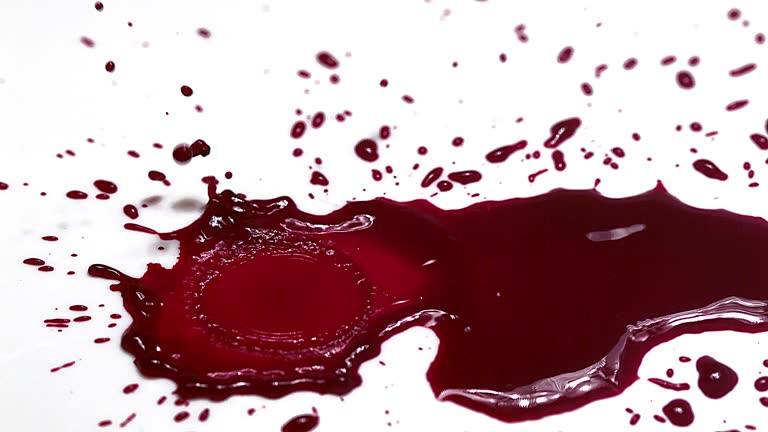Knowing how to calculate your menstrual circle without knowing what a menstrual cycle is and how it works isn’t enough.
What is menstruation?

Menstruation is a normal monthly event that happens to every woman who has reached puberty. Each month, a woman who is not pregnant and has not entered menopause releases an egg (ovum). If the egg is being fertilized by a sperm cell, pregnancy will occur. However, when no sperm cell fertilizes the ovum, the hormones estrogen and progesterone are released. This causes the lining of the uterus (endometrium) to break down and be discharged through the vagina after two weeks, which is referred to as the menstrual cycle or period.
Stages of menstrual cycle.
There are four stages of menstruation lasting between 21 and 35 days, though 85% of the women in the world have a 28-day cycle.
These are the stages:
- Menstruation phase (lasting from day 1 – 7).
If pregnancy has not occurred, the uterus sheds its lining (endometrium), and menstrual bleeding begins. Here estrogen and progesterone hormonal levels are low.
Symptoms: fatigue, cramping, and mood changes may occur.

- Follicular phase
Here the pituitary glands release follicle-stimulating hormone (FSH), stimulating ovarian follicles to mature. One follicle will become dominant and prepare to release an egg. Now estrogen and progesterone levels rise as the follicles grow. Hence the individual mood stabilizes and energy levels increase.
- Ovulation phase (14 days before the next cycle).
This is the most fertile period during which the mature follicle releases an egg that is ready to be fertilized by sperm cells. A surge in luteinizing hormone (LH) triggers ovulation.

Symptoms: some women feel cramps and cervical mucus becomes clear and stretchy.
- Luteal phase (from day 15 – 28)
This is when the ruptured follicle forms the corpus luteum. Thereby making the progesterone and estrogen to prepare the uterus for pregnancy.
Now the progesterone and estrogen levels are high. But if there is no sperm cell to fertilize the egg, the level of progesterone and estrogen will drop. which will trigger the next menstruation.
Symptoms may include premenstrual syndrome such as breast tenderness, bloating, and mood swings.
How to calculate the Menstrual Cycle.
People do different things for different purposes, such as wanting to know about their menstrual cycle. Maybe you want to prevent pregnancy, or you are looking for a child, and you want to know when you will ovulate so that you can have sexual intercourse at the appropriate time.
You may want to track when to expect your next period so that you will not be unaware. Whatever your reason, you are on the right track. I will take you step-by-step on how to do the job yourself without paying anyone to do it for you.
Knowing the stages of a menstrual cycle and calculating your menstrual cycle is as simple as ABC.
Do you know that you can have unprotected sexual intercourse with your partner multiple times for some days without getting pregnant? Sounds strange, right? Don’t worry, I am going to make everything open for you.
Without wasting much of your time, let’s start:
Calculating your menstruation cycle requires some basic knowledge about yourself. This is not any other thing other than knowing the length of your menstrual circle.
Remember, you and your best friend may not have the same length of menstrual circle. Some have a 21-day cycle, some have a 28-day to 33-day cycle.
Knowing the length of your menstrual cycle is the beginning of your wisdom.
Nevertheless, do not forget that the goal you want to achieve here is knowing your free and fertile days. Know these and know peace in your social and marital life, as you will have nothing to worry about anymore.
How Do You Know The Length of Your Menstrual Cycle?
The best tool is your pen and jotter, or the calendar. write down the date you see your first period. I mean, menstrual blood. The day you see your menstrual blood is ‘day one’ of your menstrual circle. Therefore, a day before the next period is the last day of the previous circle.
For instance, if you see your period on the 6th of November and your next period starts on the 4th of December, use a 30-day calendar month. If you want to calculate the length of your circle using the above example, you will have to count from the first day you saw your period, which is 6th November to 3rd December. Example (nov. 6, 7, 8, 9, 10,…28, 29, 30, DEC. 1, 2, 3. That means you have a 28-day circle.
Remember, you will not include the date you saw your next period because it has marked the beginning of another circle.
See the table below:
Do this for at least three months to get it correctly; this is because it may change for some time, maybe due to health issues or as a result of contraception pills. In some cases, you may calculate it for three months or get different lengths of days; in that case, choose the most occurrence length example; Jan. 30 days circle after calculation, Feb. 28 days, and March 30 days after calculation; know that you have a 30-0 day cycle.
How to know your fertile days and free period
Now, you have known the length of your menstrual circle. Let’s do the job.
Formula;
-
-
- Ovulation comes 12 to 14 days before the next period.
- Ovulation lasts for 24 hours after the egg is released.
- Sperm cells can live inside the vagina for up to 3 to 5 days before they die off.
-
Solution one, using a 28-day cycle.
Let’s say your period started on the 1st of January. Another period is expected to start on the 29th of the same month if you have a 28-day circle and there is no alteration.
Here, you have to subtract 14 days out of the 28, counting from 28, 27, 26, 25, 24, 23, 22, 21, 20, 19, 18, 17, 16, and 15, and you will have 14, which is your ovulation day.
Remember, sperm cells can live up to five days, which means if you have sex five days before the ovulation day, you are likely to get pregnant. You will subtract five days before your ovulation day, including the ovulation day and the day after the ovulation day, making it a total of seven days. This is because the female egg can last for 24 hours after it is released. This means you have from the 9th day to the 15th day as your ‘fertile days.’
That is to say that your free period starts from the first day of your period to the 8th day, your fertile days start from the 9th to the 15th, and your free days continue from the 16th to the 28th.
Solution two, using a 28-day cycle.
Now let’s do the same with someone who has a 21-day cycle. First remove 14 days from 21 counting 21, 20, 19, 18, 17, 16, 15, 14, 13, 12, 11, 10, 9, 8. This means that your ovulation day is on the 7th.
Sperm cells last for 5 days, which means your fertile days start on the 2nd day of your period to the 8th day of your menstrual circle. This implies that if you have sexual intercourse even when you are still bleeding, you will likely get pregnant. Do the same calculation if you have a 33- or 30-day cycle. Disclaimer; this can not be 100% reliable Use protection or contraception pills if you want to prevent pregnancy.


Wow, amazing job.
Great beat ! I would like to apprentice whilst you amend your website, how could i subscribe for a blog website?
The account helped me a applicable deal. I have been tiny bit familiar of
this your broadcast provided vibrant clear idea
Hurrah, that’s what I was looking for, what a information! existing here at this web site, thanks admin of
this site.
топ прогнозы на спорт prognozy-na-sport-7.ru .
диплом медсестры с занесением в реестр купить диплом медсестры с занесением в реестр купить .